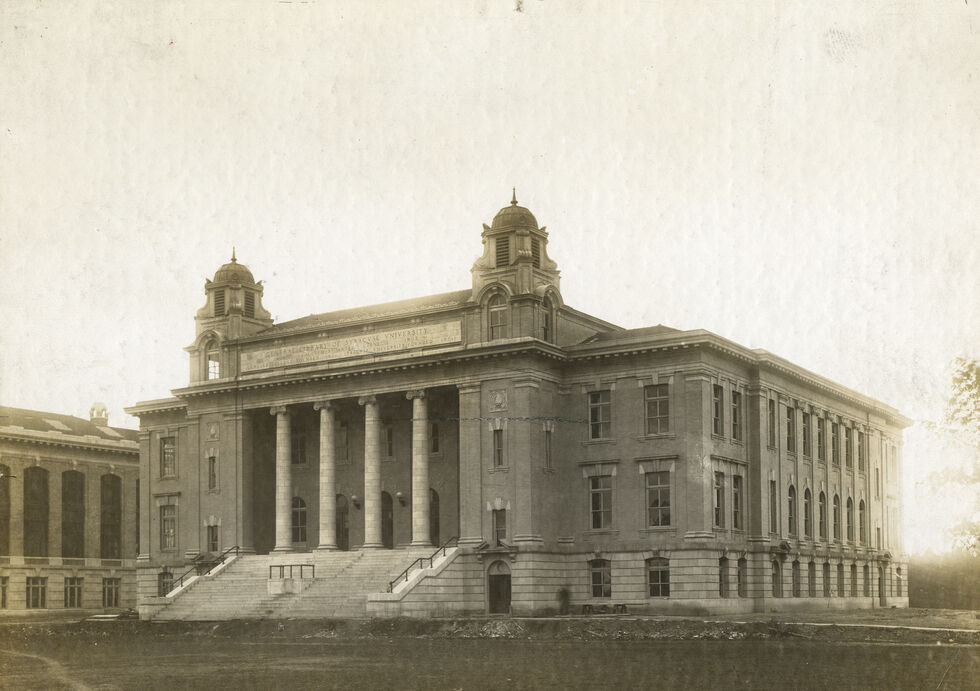Carnegie Library
"Carnegie Library" by Professors Frederick W. Revels and Earl Hallenbeck , 1905-1907
For several decades, Carnegie Library served as the University’s main library before construction of Bird Library. In 1972, with the opening of Bird Library, Carnegie was renovated to house the Engineering, Life Sciences and Mathematics libraries along with the Mathematics Department. When the Chemistry library was added in 1982, the collection was renamed the Science and Technology Library, which it remains today. The building was renovated in 2011 and, interestingly, for the first time since the mid-70s, the main entrance to the library was once again through the front stairs and doors.
Andrew Carnegie, steel magnate and philanthropist, pledged $150,000 to the construction of Carnegie Library in 1905, with the stipulation that the school raise a matching endowment. SU raised the funds within a month, but Chancellor James Day allocated the funds to Sims Hall, not the library. The income generated by Sims was later used to build Carnegie Library, which was originally built to hold the surplus of library materials, especially the Von Ranke collection from the old Von Ranke library (now the Tolley Humanities building). At the building's centennial celebration in 2007 it was noted that the building was one of only two original Carnegie libraries on a college campus still being used as a library.
Andrew Carnegie was born on November 25, 1835 in Dunfermline, Scotland. In 1848, he immigrated with his family to Allegheny, Pennsylvania. Carnegie began his career within the railroad industry and secured the role of assistant telegrapher for a high-level railroad official. This is where Carnegie gained immeasurable experience that paved the way for his transition into the steel industry. With his strong business acumen, Carnegie Steel Corporation revolutionized steel production and by 1889 became the largest steel producer in the world. His passion for philanthropic work began taking form in 1885 when he funded the development of thousands of libraries. Carnegie only funded projects where local officials showed credible construction and operational plans to ensure the communities were equally invested. He supported over 2,800 libraries and donated about $5 million to the New York Public Library. Carnegie sold his business in 1901 and earned more than $200 million from the transaction. At the age of 65, Carnegie chose to solely dedicate his energy to philanthropic work. In 1904, he established Carnegie-Mellon University. He continued to support numerous schools, libraries, museums and churches both in the US and abroad. Carnegie was a self-made steel tycoon and one of the wealthiest businessmen of the 19th century. By the time he passed in 1919, he is believed to have given away over $350 million.
SU University Archives; SU Photo and Imaging Archive; SU Archives Photograph Collection; Andrew Carnegie. The Philanthropyroundtable.org; Andrew Carnegie. (2019). The Biography.com.


